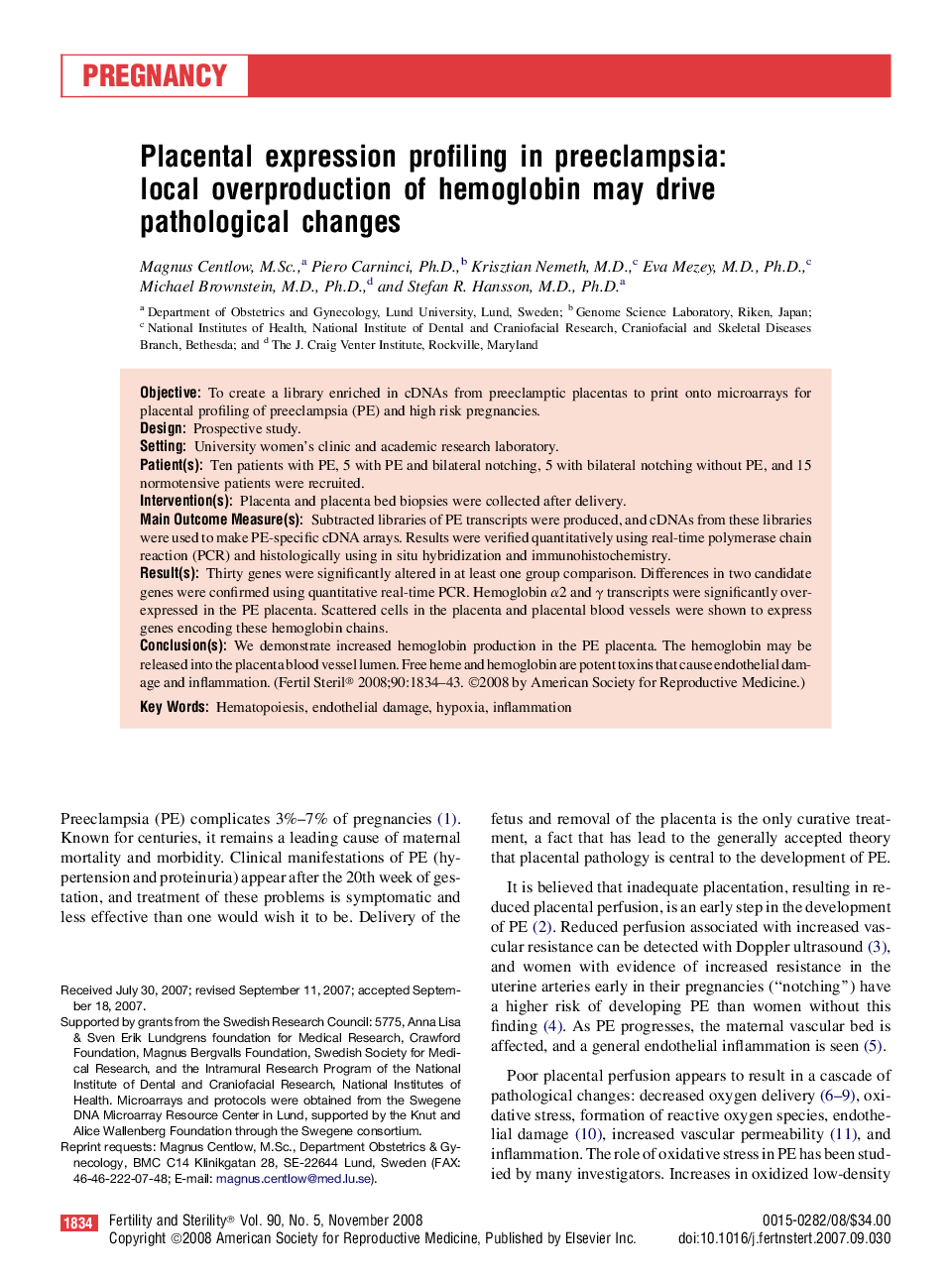| Article ID | Journal | Published Year | Pages | File Type |
|---|---|---|---|---|
| 3941629 | Fertility and Sterility | 2008 | 10 Pages |
ObjectiveTo create a library enriched in cDNAs from preeclamptic placentas to print onto microarrays for placental profiling of preeclampsia (PE) and high risk pregnancies.DesignProspective study.SettingUniversity women's clinic and academic research laboratory.Patient(s)Ten patients with PE, 5 with PE and bilateral notching, 5 with bilateral notching without PE, and 15 normotensive patients were recruited.Intervention(s)Placenta and placenta bed biopsies were collected after delivery.Main Outcome Measure(s)Subtracted libraries of PE transcripts were produced, and cDNAs from these libraries were used to make PE-specific cDNA arrays. Results were verified quantitatively using real-time polymerase chain reaction (PCR) and histologically using in situ hybridization and immunohistochemistry.Result(s)Thirty genes were significantly altered in at least one group comparison. Differences in two candidate genes were confirmed using quantitative real-time PCR. Hemoglobin α2 and γ transcripts were significantly overexpressed in the PE placenta. Scattered cells in the placenta and placental blood vessels were shown to express genes encoding these hemoglobin chains.Conclusion(s)We demonstrate increased hemoglobin production in the PE placenta. The hemoglobin may be released into the placenta blood vessel lumen. Free heme and hemoglobin are potent toxins that cause endothelial damage and inflammation.
